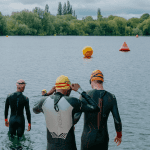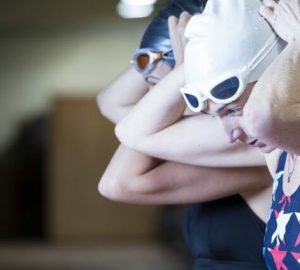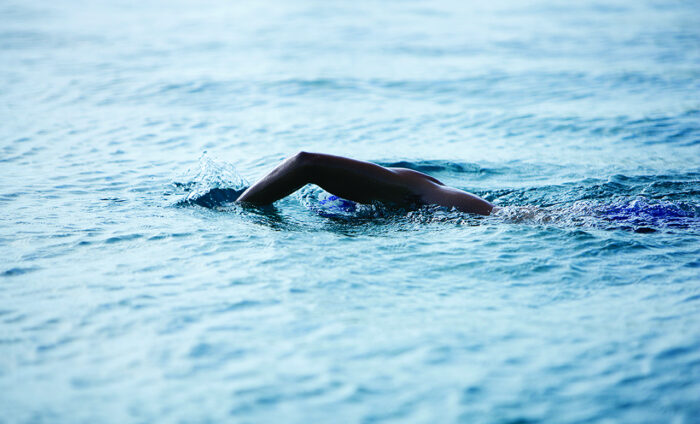
Five steps to an ultra-efficient pull
The propulsive phase of the armstroke goes by various names: the pull, the stroke, catch-and-press. Whatever you call it, making every stroke count should be a constant priority. When pressing back, there are two possible outcomes:
1. You ‘spin your wheels.’ You move the water too much and your body not so much. This is the case with 99% of swimmers – and is practically unavoidable when you stroke faster or harder.
2. You keep the water still while moving your body forward. This is exceptionally rare. It requires a stable body; acute feel for the water; and precise application of pressure. Though challenging, any swimmer can learn this.
What ‘Doc’ Saw
In 1968, legendary coach Dr James ‘Doc’ Counsilman filmed his swimmer, Mark Spitz (the best freestyler of his era with world records from 100 to 1500 metres plus those seven Olympic gold medals in 1972) underwater as he swam crawl against a grid background. Counsilman’s film showed something that overturned traditional notions about ‘moving forward by pushing water back.’ The film revealed that Spitz’s hands exited the water forward of where they’d entered. In other words, his hands held their place, and his body moved past them.
One of the things that elites do exceptionally well is hold the water. The rest of us move it around. Coaches call this ‘feel of the water’ but there’s much more to it than feel. This essential skill is so rare in part because few people have that kind of innate feel. It’s also rare because so few people have mastered the even more fundamental skills of balance and stability. If your hands are busy steadying your body, they simply can’t hold water.
Five Fundamentals for a Super-Efficient Stroke
When you stroke, you should move forward about as far as your arm pushes back – while placing minimum demand on fatigue-prone muscles. Five skills make it happen:
1.‘Trap and Wrap’ the Water.
To travel forward as far as possible, trap the largest volume of water behind your hand and forearm. Do this in part by reaching below your bodyline as you extend your hand.
2.Hold your place.
Suspending a relaxed forearm and hand from your elbow helps efficiency by:
When you pull, arm muscles do most of the work.
When you hold, core muscles take over.
3. Press straight back.
Pressing straight back maximises forward propulsion. Pressing in any other direction is wasteful – and often hurts body position. You need a balanced, stable body position to maintain steady rearward pressure.
4. Stroke with precision.
Stroking forcefully is more likely to create bubbles and turbulence than propulsion. It also increases injury risk. Instead stroke firmly, not forcefully. Rotator cuff muscles direct the pressure you apply. They work best (and stay healthy) when not overloaded.
5. Minimise drag
To create locomotion, your muscles must generate more force than the resistive force of the water. Generating muscular force is costly. Reducing drag is free.
How to Hold the Water
Fundamental 2 in the sequence above is the most challenging because it requires a rare degree of sensory awareness and precision control. Practise five focal points with short non-breathing repeats – five to six strokes. Stay with each focal point as long as needed to achieve consistency. Practising with a snorkel can accelerate learning.
Five Focal Points
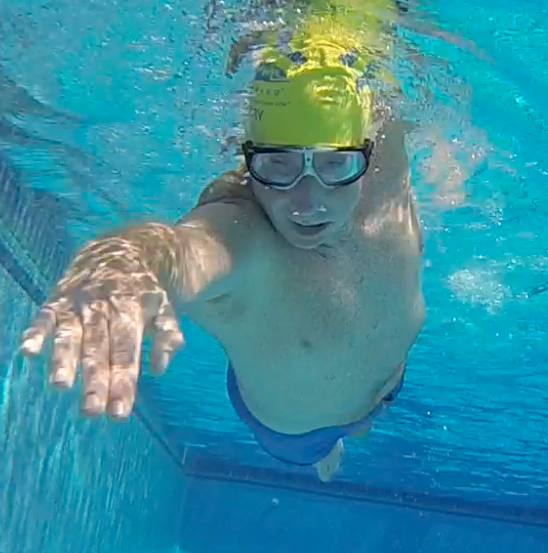
1. Watch and Feel
Watch your hand extend to be certain that your hand is below your bodyline with palm facing back as you reach full extension. Memorise the sensations that accompany this. Repeat until you do this consistently.
2. Remain still
Next, watch and feel that your hand is still for a moment after completing extension. Pausing for just a nanosecond is enough. Repeat until you achieve consistency.
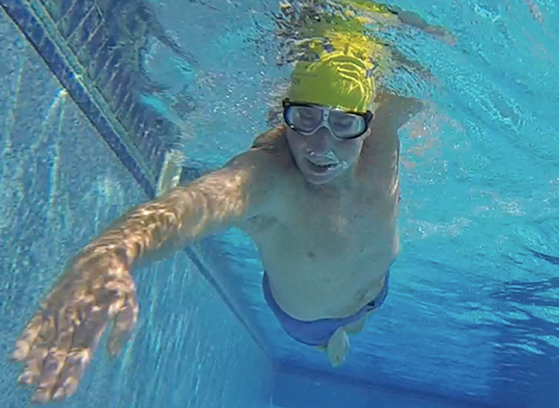
3. But keep moving
As your lead hand pauses, your other hand should keep moving through exit and recovery. This skill (called asynchronous timing) can be challenging. Give it time.
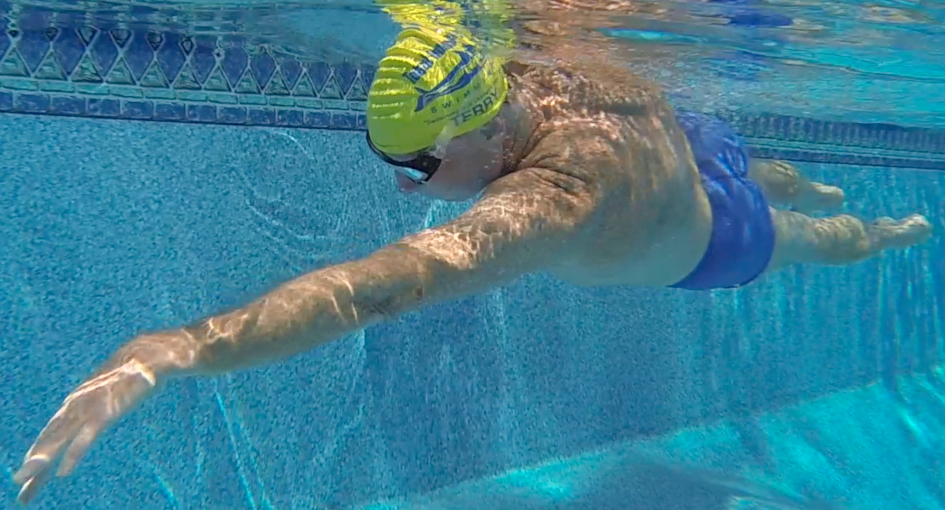
4. Hold your place
Shift focus from a still hand to actively holding your place with that hand. Even as you think about holding, you’ll feel your hand pulling. It’s normal to feel that: Stay focused on holding a little more, and pushing back less.
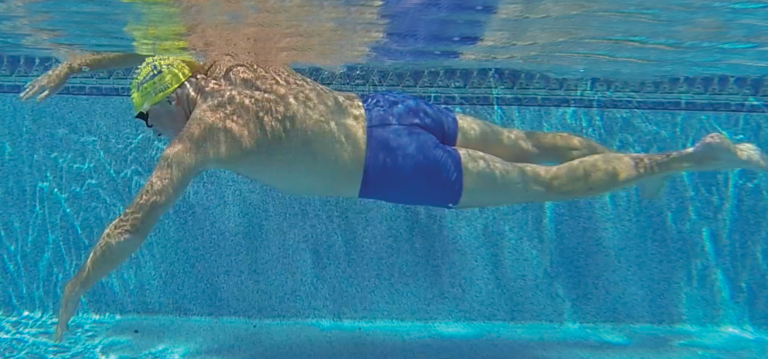
5. Propel past your grip
Use your high hip to move your body past your hand. If holding with right hand, your left hip moves you past it. This should create a sense of hips (instead of arms) doing most of the work of propulsion. This is the feeling of core-powered propulsion.







